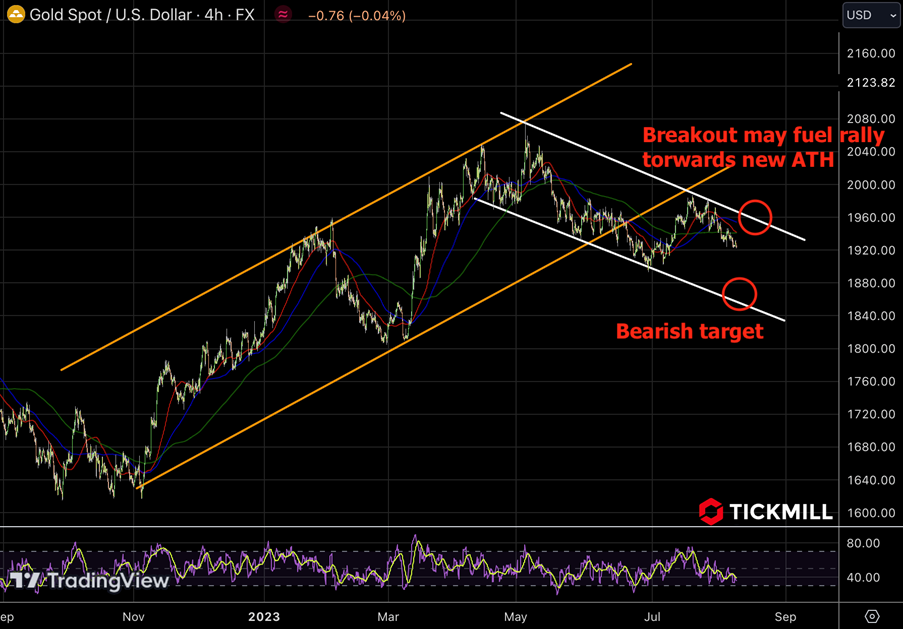US indices closed Tuesday session on a bearish note as weak data on China's foreign trade sparked a minor turmoil in the market. However, the situation managed to turn around today; equity futures rebounded, taking away the dollar's potential for an immediate continuation of the rally on the back of risk aversion. EURUSD is attempting to hold around the 1.10 level ahead of the release of the US inflation report, hoping for a new surprise in the US core inflation on the downside. Nevertheless, in the short-term perspective for this pair, downside risks persist. A possible scenario for the pair from a technical standpoint looks as follows:

The medium-term trend for the pair is undeniably ascending, yet a bearish correction has been ongoing since mid-July. Market participants expecting the pair's rise within a bullish corridor are likely to wait for more favorable levels, perhaps until the price reaches the lower boundary of the channel. This is roughly around the 1.0830-1.0850 area. Bears might also anticipate a local reversal there, winding down their activity.
Continuing from yesterday's statistics on China's foreign trade, price data has been released. Consumer inflation decreased by 0.3% in annual terms, while producer inflation stood at 4.4%. China's economic slowdown has undeniably made its mark on the market's radar and is likely to be one of the dominant factors affecting the stock market, compelling caution in the search for the yield.
Yesterday, the dollar rally was hindered by the outcome of the 3-year US Treasury note auction, which led to a slightly lower yield compared to pre-auction trading - a welcoming signal given recent concerns about dwindling demand for bonds. Today's $38 billion auction of 10-year notes and tomorrow's $23 billion auction of 30-year notes, both larger by $2-3 billion than the previous corresponding offerings, will also be closely watched by the market.
An interesting situation is unfolding in terms of technical analysis for gold. Up until early May, the price was comfortably within a clear ascending trend corridor; however, it then transitioned into a downturn, coinciding with new signals of the Federal Reserve's policy tightening and the corresponding rally in Treasury market interest rates. In mid-July, the price bounced off the upper boundary of the bearish channel (marked by white lines), and in the event of the bearish trend developing, it might attract medium-term buyers only in the vicinity of $1870 per troy ounce. Conversely, price growth and a breakthrough above the $1950 level, followed by a consolidation, could signal the market's readiness to rally to new highs:

Disclaimer: The material provided is for information purposes only and should not be considered as investment advice. The views, information, or opinions expressed in the text belong solely to the author, and not to the author’s employer, organization, committee or other group or individual or company.
Past performance is not indicative of future results.
High Risk Warning: CFDs are complex instruments and come with a high risk of losing money rapidly due to leverage. 71% and 70% of retail investor accounts lose money when trading CFDs with Tickmill UK Ltd and Tickmill Europe Ltd respectively. You should consider whether you understand how CFDs work and whether you can afford to take the high risk of losing your money.
